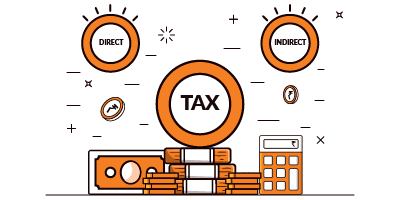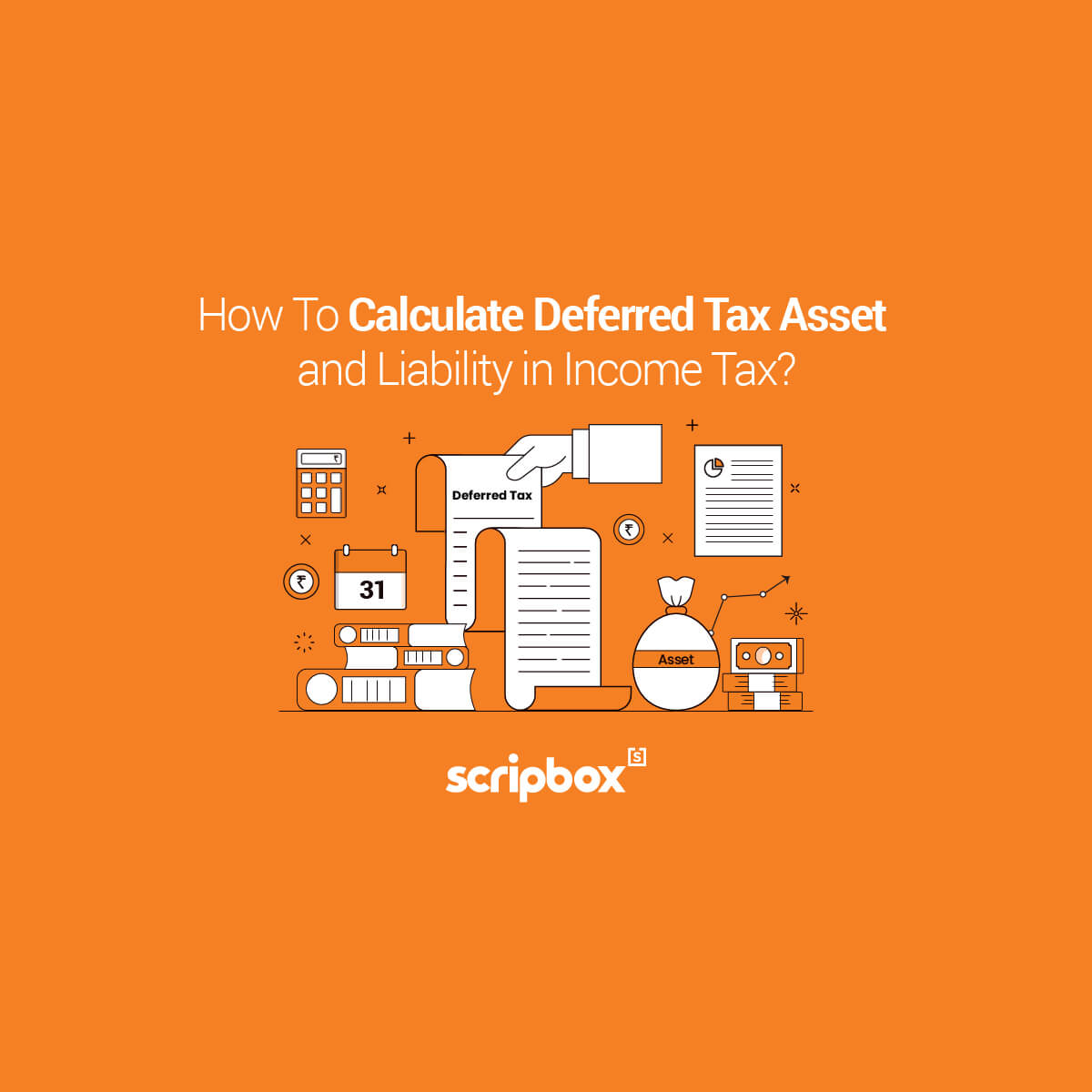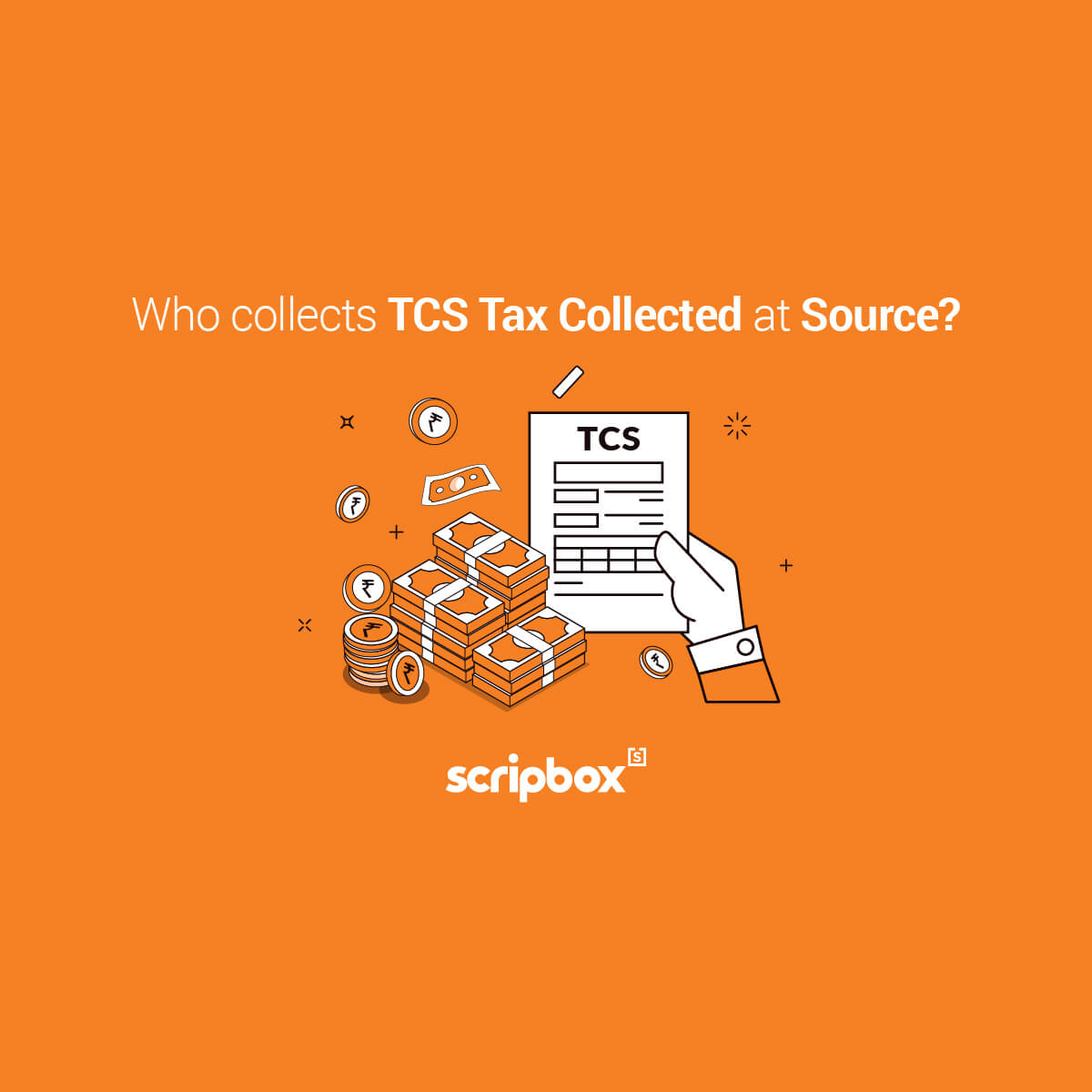Taxation is an important source of revenue for any government. This helps in the economic growth of a country along with infrastructure development in a country. The constitution of India gives the authority to the government of India to collect taxes.
What is Tax?
Taxation in India is divided in two broad categories, direct and indirect tax. Direct taxes are administered by the Central Board of Direct Taxes (CBDT) under the Income Tax Act, 1961 and are levied directly on the income of the taxpayer.
Unlike Direct Taxes, Indirect taxes are not levied on taxpayers but on goods and services. This tax is not levied on profit, income or the revenue of an individual or an entity but rather it is applied on the sale of goods or rendering of services. In the current scenario, Goods and Services Tax (GST) is levied on the sale of goods and services and is administered by Central Goods & Services Tax Act 2017, respective State Goods & Services Tax Laws, Integrated Goods & Services Tax 2017.
Types of Taxes
Direct Taxes
Direct tax is a tax imposed on the income earned by different categories of taxpayers in India. The Central Board of Direct Taxes (CBDT) regulates the Direct Taxes in consultation with the Ministry of Finance, Central Government of India. As the name suggests, the tax burden of a direct tax cannot be shifted to any other taxpayer.
- Income Tax– Income tax is levied on the direct income earned by the taxpayer every financial year. The income tax applicability and tax rate depends on the type of taxpayer and the net taxable income for the financial year. The taxpayers are resident individuals, senior and super senior citizens, Artificial Judicial Persons, Hindu Undivided Family (HUF), Body of Individuals (BOI), Association of Persons (AOP), companies, partnership firms, local firms, and local authorities.
- Capital Gain Tax– Capital gain tax is applicable on sale of a capital asset. Such a sale transaction can lead to a capital gain or loss depending on the difference between sale price and cost of acquisition. The rate of tax depends on the type of asset and the period of holding. A period of holding the asset determines the short term and long term capital gain or loss.
- Cess– Cess is a tax on tax. An education cess is applicable to every single income taxpayer. A cess is charged to support a social cause initiated by the Central Government of India.
- Surcharge– A surcharge is a tax on tax just like a cess. The applicability of surcharge is dependent on the net taxable income for the financial year. For an individual taxpayer surcharge is applicable if the net taxable income exceeds Rs 50 lakhs for the financial year.
- Securities Transaction Tax STT– STT is a direct tax applicable on every transaction of sale or purchase of any securities listed on the Indian stock exchange. Under the Securities Transaction Tax Act (STT Act) taxable transactions include sale and purchase of equity securities, derivatives, and units of equity oriented mutual funds. The rate of STT is governed and regulated by the Central Government of India.
- Corporate Tax– A corporate tax is a tax payable by every domestic and foreign company. A domestic company must pay a corporate tax on global income while a foreign company must pay tax on any income earned or accrued in India.
- Dividend Distribution Tax DDT is payable on distribution of an income to shareholders and investors by way of dividend. Currently, dividends are taxable in the hands of the shareholders and investors and no DDT is applicable on companies.
- Fringe Benefit Tax is a tax payable when a company provides fringe benefits to its employees. Such fringe benefits could include ESOP, accommodation, travel, transportation facilities, entertainment, retirement fund contribution by the employee, employee welfare, etc.
- Minimum Alternate Tax MAT- Under section 115JA of the Income Tax Act, 1961 every company must pay a minimum tax computed as per the provisions of section 115JA. The MAT is levied to ensure that every company pays a minimum tax despite other losses or low profit under other provisions.
Indirect Tax
Indirect tax, as the name suggests, is paid by the consumers of goods and services. The most recent example would be the levy of Goods & Services Tax which has subsumed all the earlier indirect taxes that were levied such as Central Excise Duty, Service Tax, VAT etc.
The government also imposes various cess and other taxes such as Health & Education Cess, stamp duty, professional tax etc. These are used for specific purposes and to improve the basic infrastructure in the country.
GST is a consumption based tax levied at every stage of a production from production, value addition to sale of the final product. The GST is added to the value of such goods and services. A taxpayer can take a credit of the taxation already paid as input tax credit while paying the output tax.
Other Taxes
Other than direct tax and GST there are other taxes applicable to the taxpayers:
- Professional Tax is applicable to professionals such as chartered accountants, lawyers, company secretaries, cost accountants, and so on. Its applicability is extended to salaried employees as well. Being a tax imposed by the State Governments the rate and applicability of profession tax differs from one state to another. You can claim a credit of professional tax as a deduction while calculating the net taxable income under income tax.
- Property Tax Real Estate Tax or Municipal Tax is applicable on residential and commercial property owners. Property tax is levied to support the maintenance of the fundamental civil services. Since the tax is levied by the municipal corporation of respective states the rates are different from one state to another.
- Road and toll tax is a tax levied to support the maintenance of the infrastructure facilities in the country
- Entertainment tax is levied on television series, movies, exhibitions, etc on the gross collections from the viewers.
Benefits of Taxes
India, being the second most populous country and the most populous democracy in the world, has a well-structured tax system in place evolving over years. Tax being the largest source of revenue for the government is used for various purposes and in turn helps in the development of the nation.
The taxes levied by the Central Government of India are used by the government to support the following functions:
| Fund and Maintain Public Infrastructure | Development and Welfare Projects | Defense and Police |
| Scientific Research | Public Insurance | Fund Salaries of State and Government Employees |
| Central and State Government Operations | Public Transportation | Unemployment Benefits |
| Pension | Law Enforcement | Public health and Education |
How does taxation work in India?
Post its independence in 1947, India has been a federal republic governed under a parliamentary system. The Indian regulatory and tax authorities have been constantly working on making the taxation laws simple thereby reducing the burden on the common man. Being a federal structure, the tax system in India is managed by the central government, state governments and the local municipal bodies. No tax can be imposed unless it is passed by law.
The two main types of taxes in India are the direct and indirect tax. In simple terms, individuals and businesses pay direct tax on the income or profits earned by them. For example, salaried employees, individuals & companies carrying on business for profits etc. This is governed by the Income Tax Act 1961 wherein detailed provisions have been incorporated for each class of assessee for different modes of income. This includes capital gains, income from house property, profits and gains on business, salary income etc.
Indirect tax, as the name suggests, is paid by the consumers of goods and services. The most recent example would be the levy of Goods & Services Taxation which has subsumed all the earlier indirect taxes that were levied such as Central Excise Duty, Service Tax, VAT etc.
The government also imposes various cess and other taxes such as Health & Education Cess, stamp duty, professional tax etc. These are used for specific purposes and to improve the basic infrastructure in the country.
Frequently Asked Questions
Since there are different taxes levied in India, the tax collection varies across both direct and indirect taxes. However, the corporate tax rate in India may reach upto 48% which is the highest.
In India, corporate taxpayers are liable to pay higher of the following:
Tax liability computed under the normal provisions computed @ 15%/25%/40% of the taxable income of the corporate or
Minimum alternate tax computed @15% of the book profits of the company.
As per Income Tax Act, income up to INR 2,50,000 is tax free in India for an individual taxpayer. No such exemption has been provided in the case of companies. Some of the other tax-free sources of income are:
1. Agricultural income: Income from agricultural land is tax free under section 10(1).
2. Scholarship income: Income earned from a scholarship is tax free under section 56(ii).
3. Interest on EPF and PPF: Interest that one earns on EPF and PPF interests are completely tax free.
4. Tax free bonds: Interest that one earns on a specific category of tax free bonds is tax free under section 10(15)(iv)(h).
To calculate the tax you must determine the gross taxable income. To calculate the gross taxable income you must add the income from all sources of income. Then calculate the total deductions, exemptions, and allowances available against such sources of income. Now deduct the total deduction from the gross income. This will be your net taxation income. To calculate the tax liability apply the tax rate for the financial year.
Related Articles
- Confused if your portfolio is performing right enough to meet your goals?
- How long have you been investing in mutual funds?
- What is your current portfolio size?
- What is your approximate annual household income?
- Your profile does not qualify for a call with a Financial Expert.
- What is Tax?
- Types of Taxes
- Benefits of Taxes
- How does taxation work in India?
- Frequently Asked Questions























Show comments